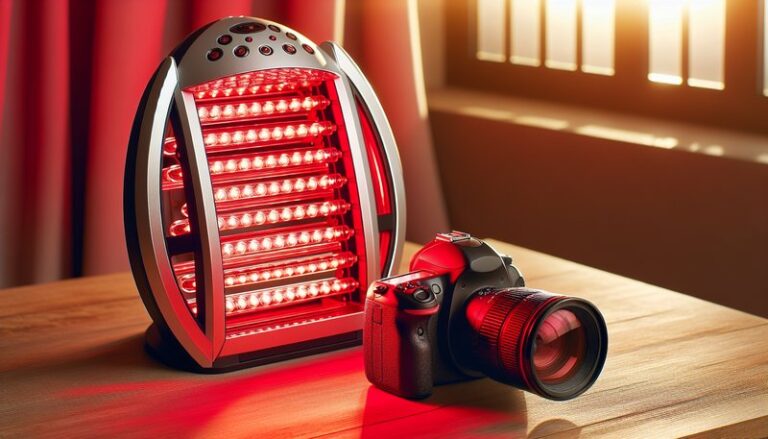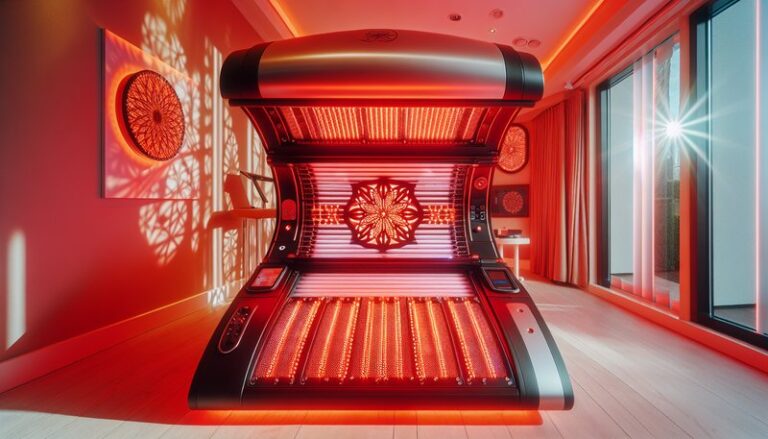Will Red Light Therapy Tan You?
Have you ever wondered if red light therapy could give you a sun-kissed glow without the harmful effects of UV exposure?
This article explores the relationship between red light therapy and tanning, examining what red light therapy is, its benefits, and whether it can help achieve a tanned appearance. We will also highlight considerations and alternatives, providing a comprehensive understanding of this popular skin treatment.
Key Takeaways
- Red light therapy primarily focuses on skin rejuvenation and healing rather than tanning.
- While it can stimulate melanin production, the effect is minimal compared to traditional tanning methods.
- Safety and specific skin types should be considered before pursuing red light therapy for tanning purposes.
What is Red Light Therapy?
Red light therapy (RLT) uses low-wavelength red light to promote various health benefits, primarily for skin health and tissue repair. This form of therapy has gained popularity for its potential to improve collagen production, reduce inflammation, and enhance overall skin appearance.
RLT functions by penetrating the skin and affecting the cells’ mitochondria, leading to increased energy production. This action can bolster the skin’s natural healing processes and improve conditions like acne, psoriasis, and wrinkles.
Mechanism of Action
The red light wavelengths typically used in therapy range from 600 to 650 nanometers. These wavelengths have been shown in studies to stimulate cellular activity by improving blood flow and reducing oxidative stress. However, it’s essential to note that RLT is not primarily designed for tanning.
What are the Benefits of Red Light Therapy?
Red light therapy comes with various benefits that extend beyond aesthetic enhancements. In this segment, we’ll delve deeper into some of these advantages.
Skin Rejuvenation
RLT is widely recognized for its ability to reduce wrinkles and promote skin elasticity. Many users report an improvement in skin texture and tone after regular treatments, thanks to enhanced collagen production.
Wound Healing
Research indicates that red light can speed up the healing process of wounds by improving circulation and reducing inflammation. This effect makes it a popular choice for individuals recovering from skin injuries or surgery.
Pain Relief
Beyond cosmetic benefits, RLT has been documented to alleviate pain associated with conditions like arthritis and muscle strains by reducing inflammation and enhancing circulation.
Enhanced Mood and Sleep Quality
Some studies suggest that red light therapy may also improve mood and sleep quality by stimulating natural serotonin production, contributing to overall well-being.
Learn all about it in Does Red Light Therapy Help Eczema?
Is it Possible to Tan with Red Light Therapy?
While red light therapy can stimulate some melanin production, it does not effectively replicate the tanning process achieved through UV light exposure. Traditional tanning works by using ultraviolet radiation to trigger more substantial melanin release, resulting in a darker skin tone.
What are the Advantages of Trying to Tan with Red Light Therapy?
Some potential advantages of attempting to tan with RLT include:
- Safer than UV Exposure: Red light therapy does not carry the same risks of sunburn or skin cancer associated with UV tanning.
- Skin Healing: For individuals with sun damage, RLT may concurrently promote healing while attempting to achieve a tanned appearance.
- Subtle Enhancement: Users may experience a mild tanning effect, particularly for those with lighter skin tones.
What are the Disadvantages of Trying to Tan with Red Light Therapy?
However, there are significant disadvantages to relying on RLT for tanning:
- Minimal Results: The tanning effect is generally minimal compared to traditional methods.
- Time-Consuming: It may require numerous sessions over a long period to see any noticeable change.
- Cost Considerations: Regular treatments can become expensive, and the benefits may not justify the investment.
What are the Things to Consider Before Trying to Tan with Red Light Therapy?
Before opting for red light therapy as a means to achieve a tan, consider the following factors:
Skin Type
Understanding your skin type is crucial. Individuals with darker skin may notice a mild tanning effect, while those with fair skin might experience little to no change.
Session Frequency
Determining how often you will undergo treatments is essential. Consistency impacts results, and one-off sessions will likely not yield noticeable changes.
Consultation with Professionals
It is advisable to consult with a skincare professional before beginning red light therapy, especially if you have any pre-existing skin conditions or concerns.
What are the Alternatives to Tanning with Red Light Therapy?
If you are seeking a tan, several alternatives may be worth considering:
Sun Exposure
Natural sunlight can achieve an effective tan quickly, but it comes with significant risks such as skin damage and increased cancer risks. Proper precautions, such as sunscreen, should always be taken.
Tanning Beds
Tanning beds emit UV radiation to produce a tan; however, they carry similar risks as sun exposure and are generally not recommended by dermatologists.
Self-Tanning Products
Self-tanners offer a safer and temporary option to achieve a bronzed look without UV exposure. They come in various forms, including lotions, sprays, and mousses, and are ideal for those looking for immediate results without long-term commitment.
See the complete post Can Red Light Therapy Reverse Grey Hair
Conclusion: Is it Recommended to Tan with Red Light Therapy?
In conclusion, while red light therapy can offer numerous skin benefits, it is not an effective method for achieving a tan. Those seeking a tanned appearance may need to explore safer alternatives that align with their skin type and health considerations. Always prioritize safety and consult with professionals to find the best solution for your skin goals.
Frequently Asked Questions
Can red light therapy cause skin irritation?
Generally, red light therapy is safe and well-tolerated. However, some individuals may experience temporary redness or sensitivity. It’s advisable to start with shorter sessions to gauge your skin’s reaction.
How long do the results from red light therapy last?
Results can vary by individual and treatment frequency. Many users report improved skin texture and appearance lasting several weeks after regular sessions.
What is the ideal duration for each red light therapy session?
Most sessions typically range from 10 to 20 minutes. It’s essential to follow the recommendations provided by your service provider or the device manufacturer.
Can I use red light therapy along with other skincare treatments?
Yes, red light therapy can be combined with other treatments. However, consult with your skincare professional to determine the best regimen for your skin type and concerns.
Is there any age restriction for using red light therapy?
Red light therapy is considered safe for most ages, but it’s best suited for adults. Always consult with a healthcare provider before starting any new therapy, especially for minors.






